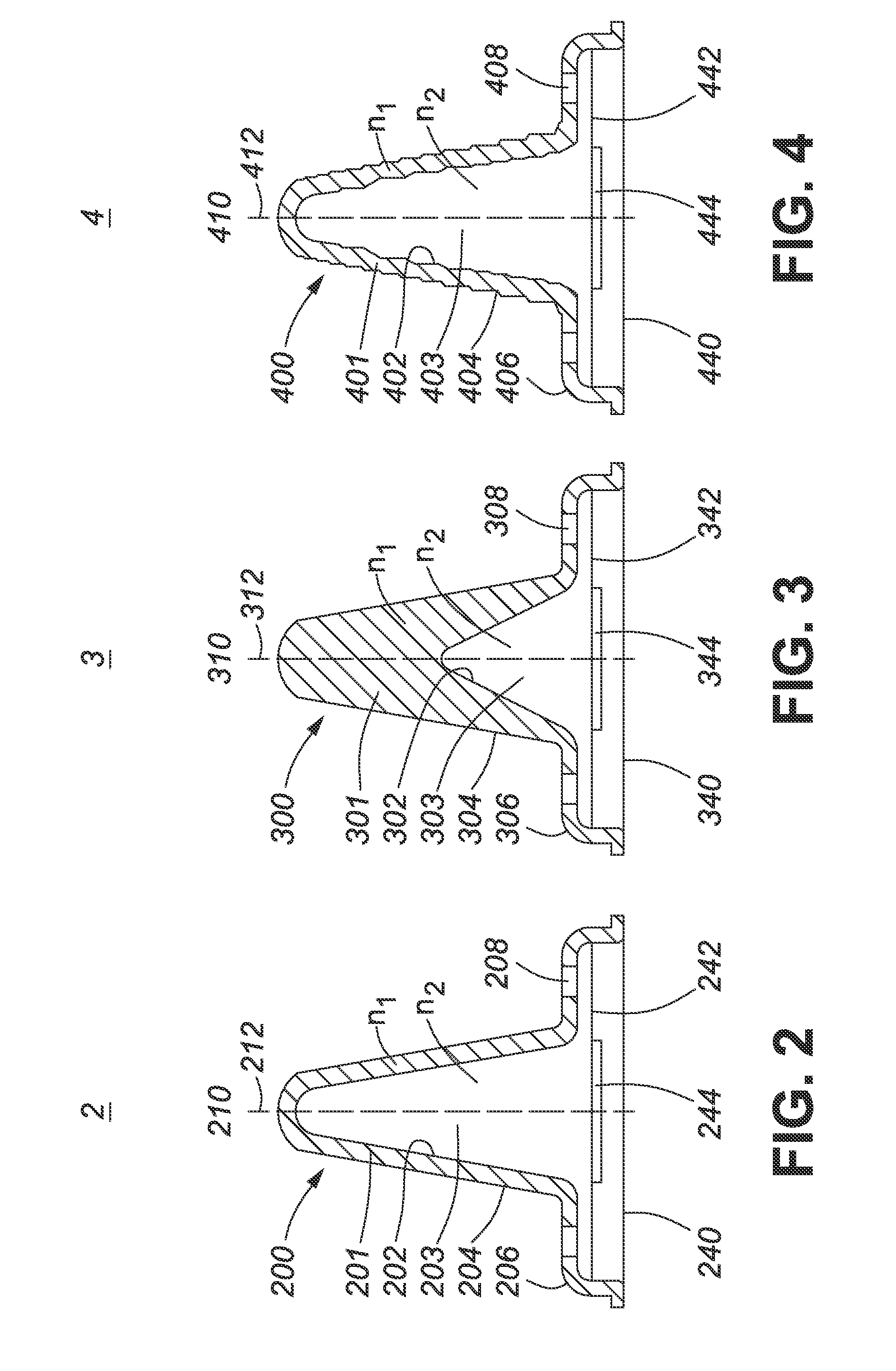Optical device and system for solid-state lighting
a technology of optical devices and solid-state lighting, applied in semiconductor devices for light sources, lighting and heating apparatus, lighting and heating arrangements, etc., can solve the problems of increasing manufacturing costs, complex geometry of these structures, complex structures and expensive design and manufacturing
- Summary
- Abstract
- Description
- Claims
- Application Information
AI Technical Summary
Benefits of technology
Problems solved by technology
Method used
Image
Examples
first embodiment
[0065]FIG. 2 shows a schematic cross-sectional view of an optical device 2 comprising a cone light pipe or light guide similar to the optical device 1 shown in FIG. 1 (to facilitate comparison, corresponding parts are labelled with the same reference numerals incremented by 100). The light guide 2 has a generally conical form and comprises a body 200 of an optically-transparent material comprising a first, inner cone surface 202 and a coaxial second, outer cone surface 204. The surfaces have rotational symmetry around the vertical axis 210 (z-direction) of the cone. Each of the first and second cone surfaces 202 and 204, respectively, extend upwardly and converge to a rounded tip 212 at the apex of the conical body 200, and thus, define an outer cone 201, and an inner cone cavity 203.
[0066]A simplified view of part of the body 200, to illustrate parameters defining the structure, is shown in FIG. 7A. That is, the inner cone surface 202, defining the inner cone cavity 203, is define...
second embodiment
[0068]FIG. 3 shows a schematic cross-sectional view of a cone light guide 3 according to a The light guide 3 is similarly defined by parameters Φ, Θ, r, R, h, H, d, D, as indicated in FIG. 7A. The outer form of the light guide 3, defined by outer conical surface 304, having an outer cone angle Θ, similar to that of light guide 2 shown in FIG. 2. However, the inner conical surface 302 has a larger cone angle Φ and tapers to a rounded tip 314 at a height h about half the height H of the rounded tip 312 of the outer cone surface 304, which results in a smaller inner cavity 303. As illustrated, the thickness of conical body 300 of the light guide 3 therefore increases gradually from a base portion 306 to the inner apex 314, and then rapidly to the solid upper tip 312 of the outer cone 301. The base portion 306 also comprises ventilation apertures 308. The cavity 303 is air filled, i.e. refractive index n2=1 and aligns over an LED emitter area 344 of an LED light source 340. The conical...
PUM
 Login to View More
Login to View More Abstract
Description
Claims
Application Information
 Login to View More
Login to View More - R&D
- Intellectual Property
- Life Sciences
- Materials
- Tech Scout
- Unparalleled Data Quality
- Higher Quality Content
- 60% Fewer Hallucinations
Browse by: Latest US Patents, China's latest patents, Technical Efficacy Thesaurus, Application Domain, Technology Topic, Popular Technical Reports.
© 2025 PatSnap. All rights reserved.Legal|Privacy policy|Modern Slavery Act Transparency Statement|Sitemap|About US| Contact US: help@patsnap.com



